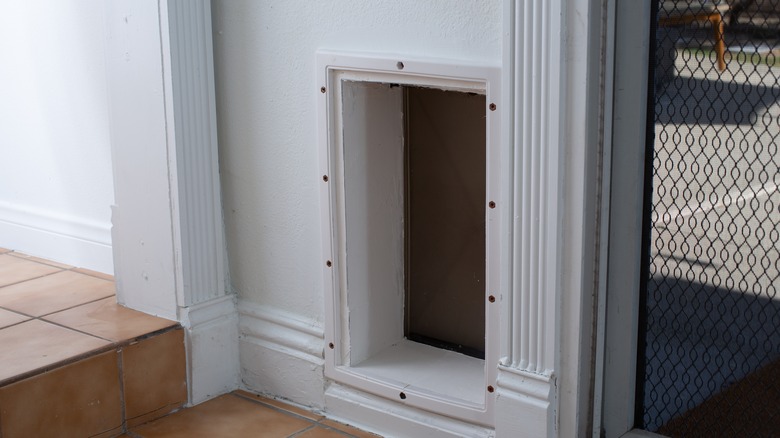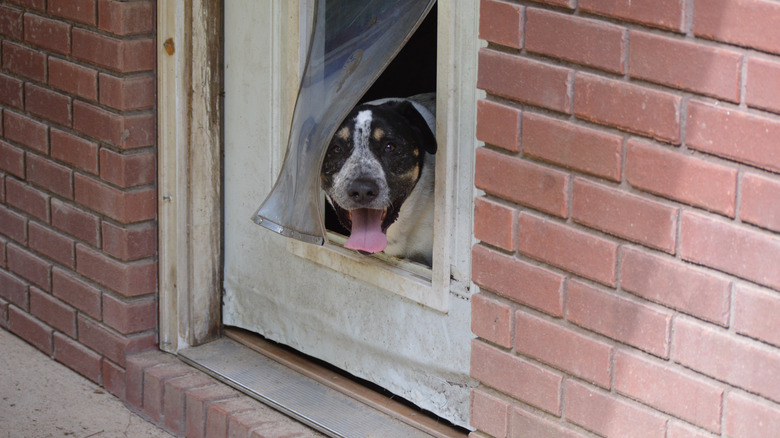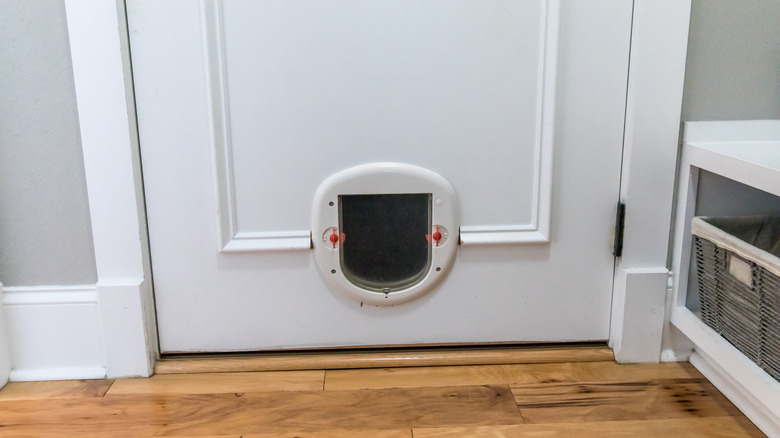What You Should Know Before Installing A Dog Door
When you have pets that require some outdoor playtime, installing a dog door may seem like a necessity. However, you will need to look at some considerations before jumping into this project. First off, location is key to successful dog door usage, according to Caring Pets. This is where you decide if you need a door that leads directly to the yard or an indoor variety that is installed into an interior wall if Fido sleeps in your room at night.
You would also need to think about the size that best fits your chosen location, which would also provide easy access for your pet. In other words, the door has to be wider and taller than the pet. For small dogs, finding a dog door that meets your needs might be easy, but if you have a giant breed, like a Leonburger, you should probably talk to a professional installer or simply stick to letting your dog in and out of the house yourself.
Additionally, security in relation to burglars (yes, you'd be surprised) and critters is another factor that comes into play when choosing a dog door along with keeping cold air in or out. With much to ponder, we broke down some of the considerations and added some possible solutions to the dog door dilemma.
Measure and plan carefully
As you plan for this project, marking the area where you plan on placing the door will involve measuring your pet beforehand. As mentioned by Pet Doors, one way to do so is to measure the space between the door and the frame just as your pet is walking out. This will give you an idea of how wide the dog door will need to be, but don't forget to add some additional space to that measurement so that your dog won't get stuck.
Along with width, you'll need to measure how tall your pet is when standing on all fours. Again, you'll also need to make some room for the dog to be able to duck and exit. Plus, you'll want to allow enough space at the bottom of the dog doorway for your pet to step over but without cutting too much into the actual door.
The other consideration is the location of the dog door, as previously mentioned. An interior dog door allows your pet to exit a room and head into the hallway. This can be installed into a wall (which affects the drywall) or your bedroom door — whichever has the least impact on the appearance and function of the space. If that option doesn't appeal to you, then an exterior door that leads outside is sufficient.
You have options
Luckily, there's a dog door that suits just about any need and purpose. Beyond just interior and exterior doors, you can purchase one that has a sophisticated feature that senses your pet's microchip and allows for entry, thus keeping strays and other critters from crawling inside. Naturally, if you have a large dog door for a large pet, this option would also ward off burglars (per Home Depot).
Or, if you have an energetic dog that experiences spurts of hyperactivity, then you'll need to opt for a sturdy door and frame that won't break upon impact. Often, durable rubber flaps might be the answer to this issue, and many of these types of doors come with magnets that help keep them closed in case you have concerns about heat or cold escaping.
If you're worried that a dog door may not be an option because you have French doors or a sliding glass door, there are models that are specifically designed for that situation as well. Moreover, if you have a cat who likes to roam the yard, there's an option that fits into a window that allows for easy access.


